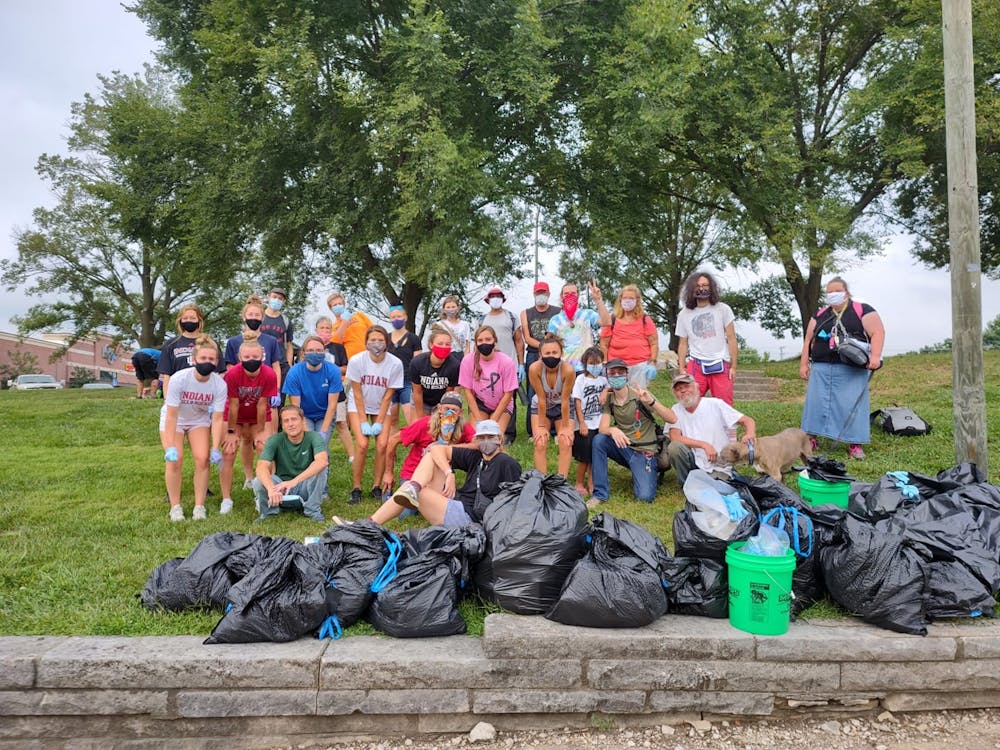Luxury student apartments and enhanced commercial and entertainment amenities appear to bring life and movement to Bloomington. This is at the expense of low-income individuals and people experiencing homelessness in the city.
Bloomington, with a poverty rate soaring at 36.6%, instead marvels at the university and the wealthy, white students it tends to attract. The influx of these students has increased demand for housing, driving the cost of rent so high it is not affordable for many Bloomington residents.
Despite an image projecting a vibrant campus and city life, IU and Bloomington exacerbate violence toward people experiencing homelessness, to which both institutions must render reparations for the trauma they have perpetuated against those without homes.
In 2016, the city launched the Safety, Civility and Justice Initiative aimed at making “downtown look, feel and become safer.” This followed an outcry from business owners, students and members of the public, who cited human waste, littered syringes and other unwelcome behaviors from unhoused folks that made residents feel “unsafe.” The use of People’s Park by people experiencing homelessness even inspired a petition on Change.org to address these concerns.
“I feel scared walking past this park at night, and with as much tuition as I am paying (out of state), I deserve to feel safe,” wrote one petitioner.
People experiencing homelessness, too, deserve to feel safe and welcome in their communities.
The city's 2016 initiative increased police presence along Kirkwood Avenue and the downtown area and had security cameras installed around People’s Park and Seminary Park to monitor “criminal behavior.” It also included hiring four IUPD officers to spend 100 hours a week assisting the Bloomington Police Department with their tyranny downtown.
Rather than provide adequate mental health resources, addiction services and affordable housing, IU and the City of Bloomington pressured people without homes to disperse and forced them out of the public eye. While the poor may be highly visible in some areas, they are otherwise ignored to preserve the comfort of those passing on the street.
The newly constructed, multi-million dollar Switchyard Park boasts 57.52 acres of free amenities. Mayor John Hamilton said in a May 2018 interview the park is “free and open to everyone.” Lo and behold, the park locks its restroom facilities and BPD surveils it at night, ensuring those without homes know they are not welcome. This obliges them to set up tents in other remote areas, where they are often subjected to verbal and physical harassment from the police.
“Now that it is illegal to be without a home, it has been made clear that law enforcement and the motto ‘protect and serve’ is not granted to the homeless population because they are not ‘truly’ part of the community,” read a 2018 report from the National Coalition for the Homeless. “This leaves a homeless individual as an easy target for police brutality and inhumane treatment from the community.”
Forrest Gilmore, director of the Shalom Community Center, said the tension between the Bloomington community — including students — and those experiencing chronic homelessness is not new. He recalled a 2013 incident when IU’s Kappa Delta sorority chapter hosted a homeless-themed party. They smudged dirt on their faces and proudly held signs with the slogan “Why lie? It’s for booze.”
These blatant attempts to demonize the unhoused do nothing but encourage vicious perceptions and behaviors toward them.
“Bigotry and hate crimes directed at people without homes is not uncommon at all,” Gilmore said.
Members of the Bloomington Homeless Coalition reported an unhoused man was assaulted in August by four young men along the B-Line Trail after riding around and taunting him on electric scooters. While one person recorded, the other three beat the man relentlessly with baseball bats.
Just last year, an unhoused woman was dragged behind a car repair shop and raped by a man in his twenties who she had lent a cigarette
In 2016 and 2017, there were 112 documented attacks and 48 of the victims lost their lives, according to a 2018 National Union for the Homeless survey.
These attacks are motivated by bias against people experiencing homelessness or by the perpetrators’ ability to prey on individuals because they are without the safety of a home. They are made possible by the structural violence that leaves people without access to the things required to fulfill their basic needs.
Regardless of these statistics, people experiencing homelessness are treated so poorly in society that hate crimes against the protected class are habitually unreported and forgotten. There is no way of knowing the full scale of the abuse in Bloomington.
The city and university’s intentional move to centralize students to the downtown area has violently undermined the needs of those experiencing chronic homelessness. With reasonably little faith in these institutions and the surrounding community, people that are unhoused often have nowhere to turn but to each other.
Anti-homeless violence unveils an epidemic of systemic and economic challenges that continue to plague the poor. Deep reflection and dialogue between the city, community and those disenfranchised are necessary for Bloomington to address and dismantle the roots of poverty and the stigma surrounding it.
We must remove our biases and work to understand our unhoused brothers and sisters as individuals with vastly diverse and valuable life experiences.
Nonetheless, Robert “Pops” Downham, who helped spearhead the Bloomington Homeless Coalition, is determined their demands, as a family, will be met.
“Change has got to happen,” Downham said. “And as far as we are concerned, change is gonna happen.”
Peyton Jeffers (she/they) is a senior studying human development and family studies and human sexuality. She is a member of Camp Kesem at Indiana University.






